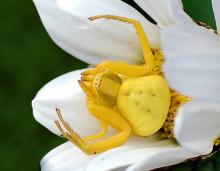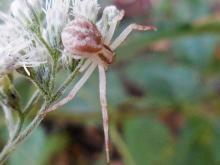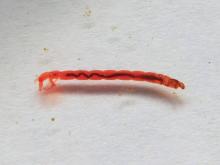Media

Species Types
Scientific Name
Misumessus oblongus (formerly Misumenops oblonga)
Description
The green crab spider has spines, and the entire body and legs are pale green to silvery white. Like other crab spiders, its legs extend outward from the sides, and it can walk in any direction.




























